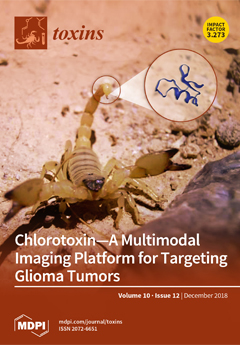Botulinum neurotoxin type-A (BoNT-A) blocks the release of acetylcholine from peripheral cholinergic nerve terminals and is an important option for the treatment of disorders characterised by excessive cholinergic neuronal activity. Several BoNT-A products are currently marketed, each with unique manufacturing processes, excipients, formulation,
[...] Read more.
Botulinum neurotoxin type-A (BoNT-A) blocks the release of acetylcholine from peripheral cholinergic nerve terminals and is an important option for the treatment of disorders characterised by excessive cholinergic neuronal activity. Several BoNT-A products are currently marketed, each with unique manufacturing processes, excipients, formulation, and non-interchangeable potency units. Nevertheless, the effects of all the products are mediated by the 150 kDa BoNT-A neurotoxin. We assessed the quantity and light chain (LC) activity of BoNT-A in three commercial BoNT-A products (Dysport
®; Botox
®; Xeomin
®). We quantified 150 kDa BoNT-A by sandwich ELISA and assessed LC activity by EndoPep assay. In both assays, we assessed the results for the commercial products against recombinant 150 kDa BoNT-A. The mean 150 kDa BoNT-A content per vial measured by ELISA was 2.69 ng/500 U vial Dysport
®, 0.90 ng/100 U vial Botox
®, and 0.40 ng/100 U vial Xeomin
®. To present clinically relevant results, we calculated the 150 kDa BoNT-A/US Food and Drug Administration (FDA)-approved dose in adult upper limb spasticity: 5.38 ng Dysport
® (1000 U; 2 × 500 U vials), 3.60 ng Botox
® (400 U; 4 × 100 U vials), and 1.61 ng Xeomin
® (400 U; 4 × 100 U vials). EndoPep assay showed similar LC activity among BoNT-A products. Thus, greater amounts of active neurotoxin are injected with Dysport
®, at FDA-approved doses, than with other products. This fact might explain the long duration of action reported across multiple indications, which benefits patients, caregivers, clinicians, and healthcare systems.
Full article






